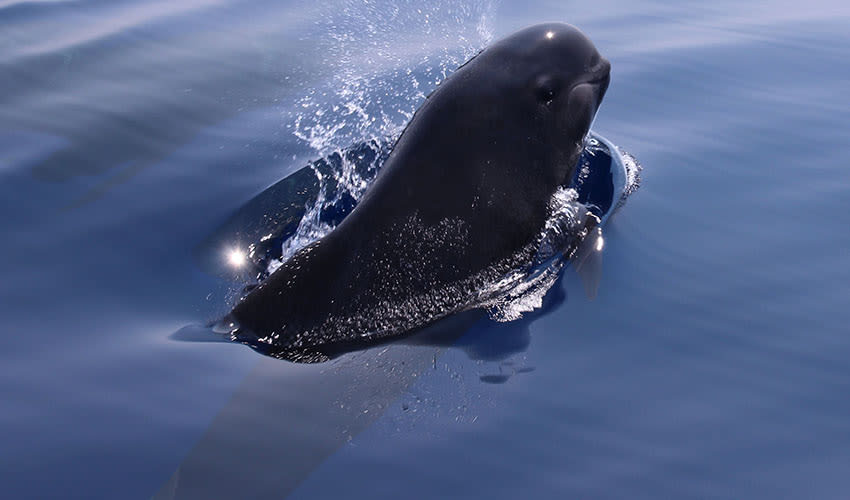Belonging to the dolphin family (Delphinidae), it’s not a true whale but rather a large oceanic dolphin—closely related to species like the killer whale (orca). The long-finned pilot whale gets its name from its distinctively long, graceful flippers and its reputation for following a “pilot” or leader while swimming in tight-knit family groups. With their striking black bodies, rounded heads, and strong social bonds, these whales are among the most captivating and misunderstood animals in the sea.
Physically, the long-finned pilot whale is an impressive sight. Their bodies are sleek and shiny black or dark gray, often marked by a pale gray “saddle patch” behind the dorsal fin and a faint anchor-shaped pattern on the chest. The most distinguishing feature, as their name suggests, is their extraordinarily long pectoral fins, which can reach nearly one-fifth of their body length—giving them an elegant, sweeping silhouette in the water. Their heads are rounded with no visible beak, and their dorsal fins curve gracefully backward like a scythe. These features, combined with their fluid, synchronized swimming, make them one of the most visually elegant cetaceans.
The long-finned pilot whale is a deep-diving hunter, primarily feeding on squid, but also taking fish such as mackerel and cod when available. They can dive to depths of over 600 meters (2,000 feet) and hold their breath for more than 10 minutes, using echolocation to find prey in the pitch-black depths. Their strong teamwork allows them to coordinate hunting tactics, surrounding schools of squid or fish with remarkable precision. They are found in cold and temperate waters of both hemispheres, including the North Atlantic, Southern Ocean, and subantarctic regions. In the North Atlantic, populations are often spotted off the coasts of Iceland, Norway, and the British Isles, where they are known for their playful behavior and occasional close encounters with boats.
Distribution
 Black sea
Black sea Mediterranean Sea
Mediterranean Sea Gibraltar
Gibraltar Official estimate
Official estimate
 Morocco
Morocco Spain
SpainAnything we've missed?
Help us improve this page by suggesting edits. Glory never dies!
Suggest an editGet to know me
Terrestrial / Aquatic
Altricial / Precocial
Polygamous / Monogamous
Dimorphic (size) / Monomorphic
Active: Diurnal / Nocturnal
Social behavior: Solitary / Pack / Group
Diet: Carnivore / Herbivore / Omnivore / Piscivorous / Insectivore
Migratory: Yes / No
Domesticated: Yes / No
Dangerous: Yes / No




